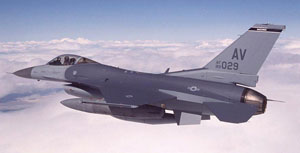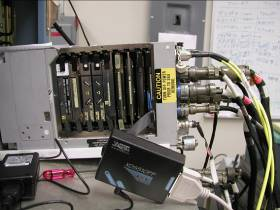

Engineering Solutions
| DLS has an
experienced organization that can provide support for
our customers in the areas of: Integration Support Upgrades Software Fault Investigations Problem Report Resolution/Support Obsolescence Reports Configuration Management. |
|
DLS can support integration of MIDS LVTs into customer platforms and test environments. Integration support can include:
-
Installation support including but not limited to initialization file preparation,
data collection and interpretation, and BUS communication support -
Requirements interpretation
-
Support for technical questions regarding the integration of MIDS LVT and RPS
-
Support for technical questions regarding mechanical installation of MIDS LVT and RPS
-
Support for handling of problem reports
| DLS can perform MIDS LVT hardware and software upgrades. These can be provided in the field or during normal maintenance cycles. DLS can provide tools that will allow customers to perform software upgrades independently. |
|
DLS will maintain current and previous versions of MIDS Program Office (PO) controlled CORE and TIO software, including N_I_Computer Software Component (NICSC), S_I_Computer Software Component (SICSC), Boot Code Program (BCP), Tailored Processor (TP), A-Mux Computer Program (ACP), and Ground Mux Computer Program (GCP).
DLS will maintain current and previous versions of DLS’ vendor specific software and firmware for the following modules: Voice, Signal Message Processor, Receiver Transmitter Interface, Receiver Synthesizer, TACAN, Exciter/Interference Protection Feature, Power Amplifier, and Internal Power Supply.
DLS can perform investigations relating to software fault reports and can prepare preliminary responses. The preliminary responses would include details of the investigation, such as nature of the investigation, and data and documents reviewed. For DLS vendor software, the response would include the recommended solution and an assessment of the effort required to implement the solution. For MIDS PO controlled software, the response would include a recommendation for creation of a problem report. DLS can assist with the development of the problem reports.
§Fault Investigations << Back to Top
DLS can perform testing to verify faults identified by the customer in the field. Upon verification, DLS can support the customer in development of a problem report to be submitted to the Problem Report Tracking Database (PRTD) regarding the fault.
§Problem Report Resolution/Support << Back to Top
DLS can provide guidance
and support when a customer experiences
faults or abnormal performance occurs in
the MIDS LVT and RPS.
This support can include:
-
Advice regarding known deviations in the MIDS LVT, RPS, and associated software
-
Advice on workarounds for handling known deviations and waivers
-
Advice regarding new deviations that occur during the integration process, as applicable
-
Telephone or on-site support, where applicable, to identify the source of the fault and determine if the fault is known and if a problem report should be submitted to the PRTD
§Obsolescence Reports << Back to Top
Due to the timeline of required operation of a MIDS LVT, some parts used to manufacture the MIDS LVT may become obsolete. When a DLS supplier decides to discontinue production of a part, they will normally provide a date for last time buys to purchasers. The purchaser must then evaluate whether they currently have enough stock, additional stock is available on the aftermarket, a replacement part exists, or if a last time buy is needed to maintain repair and production estimates for the product’s lifetime. An obsolescence register is created that defines:
-
• DLS part number
-
• Vendor part number
-
• Part description
-
• Assembly used on
-
• Anticipated corrective action plan
-
• Quantity used per terminal
-
• Last Time Buy exercise date
In addition, this register will identify those parts which DLS believes will become obsolete within the next 12 months. The anticipated obsolescence data is based upon input from the vendors and may change at their discretion. It is included in the register to provide a more pro-active approach with regard to parts procurement. This register may be of interest to DLS customers who maintain their own spares stock for DLS repair use.
Configuration Management << Back to Top
DLS utilizes a Configuration Management (CM) system to control the system’s functional and physical characteristics over the life-cycle of a product. CM principles provide for the orderly establishment, documentation, and maintenance of a product’s functional performance and physical attributes, managing changes to the attributes, and furnishing accurate information essential to the product’s use, reproduction, maintenance, and procurement. Configuration Control of software will be particularly important for fielded products – both by DLS and by user organizations.
Configuration management documentation addresses:
•
-
Configuration identification methods to identify the product and its associated
documentation -
•Configuration control
-
•Configuration status accounting
-
•Configuration audit
Software control documentation includes:
-
•Providing traceability of software part numbers to the drawing control system
-
Sorting and protecting software media from unauthorized access, inadvertent damage, or degradation
-
Ensuring documentation and archival of each software version
-
•Identifying and marking software media
-
•Reviewing and approving software changes << Back to Top
Terms of Access | Privacy Statement

